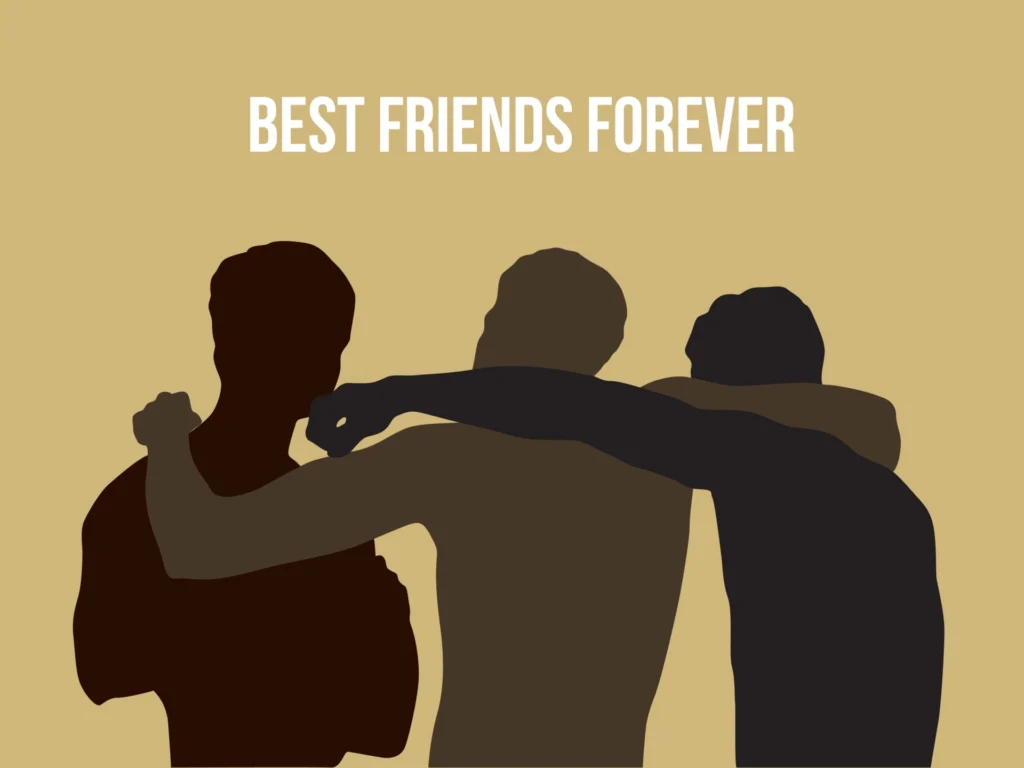BFF FULL FORM: What Does BFF Stand For?
Are you familiar with the term “BFF”? Most likely, you’ve encountered it in a text message, social media post, or conversation with a friend. But what exactly does BFF mean, and where did it originate? In this article, we’ll explore the BFF Full Form, its history, usage, and more.
Read Other Full Forms
What Does BFF Stand For?
BFF is an acronym that stands for “Best Friends Forever.” It’s a term used to describe a close, long-lasting friendship between two individuals. The term “forever” implies that the friendship is permanent, and both individuals will remain friends no matter what. you can also download HD quality Best Friend Forever Whatsapp DP Images to Share on Social media with your friends.

Origin of BFF
The origin of BFF is unclear, but it’s believed to have emerged in the 1990s. It gained widespread popularity in the early 2000s, with the rise of social media platforms like MySpace and Facebook. Since then, BFF has become a ubiquitous term in digital communication, particularly among younger generations.
Different Interpretations of BFF
While BFF officially stands for “Best Friends Forever,” some people interpret it differently. For instance, some use it to mean “Best Friend Fights” or “Best Friends for Fun.” Others use variations like “Bestie for Life,” “Best Friend for Eternity,” or “Best Friend and Family.”
When to Use BFF
BFF is usually used to refer to a close, long-term friendship. It’s a term that people use when they want to emphasize the depth of their relationship with someone. You can use BFF to describe a childhood friend, a college roommate, a work colleague, or anyone you’ve shared significant experiences with.
How to Use BFF in Conversation
Using BFF in conversation is simple. You can use it in a casual conversation with your friend, in a text message, or in a social media post. For instance, you could say, “I’m going out with my BFF tonight,” or “Happy birthday to my BFF! Love you!” Using BFF is a way of showing affection and appreciation for your friend.
Common Acronyms Related to BFF
BFF is just one of many acronyms used in digital communication. Some other common acronyms related to BFF include:
- BAE (Before Anyone Else)
- BRB (Be Right Back)
- LOL (Laugh Out Loud)
- LMAO (Laughing My Ass Off)
- ROFL (Rolling On the Floor Laughing)
- TTYL (Talk to You Later)
- FYI (For Your Information)
BFF vs. Other Friendship Terms
While BFF is a popular term for close friendships, it’s not the only one. Other terms like “bestie,” “ride or die,” “partner in crime,” and “soulmate” are also used to describe close friendships. However, BFF specifically refers to a long-lasting, enduring friendship.
The Psychology of Best Friendships
Friendships are essential for our mental and emotional well-being. According to research, having close friendships can reduce stress, anxiety, and depression, increase happiness, and improve our overall quality of life. Best friendships, in particular, are vital for our sense of identity, self-esteem, and social support.
The Benefits of Having a BFF
Having a BFF can bring numerous benefits to our lives. Some of the advantages of having a best friend include:
- Emotional support during difficult times
- A sense of belonging and connection
- Shared experiences and memories
- Laughter and fun
- A sounding board for ideas and opinions
- A partner for activities and adventures
- A confidant for secrets and personal information
Maintaining Strong BFF Relationships
Like any relationship, maintaining a strong BFF bond requires effort and commitment. Here are some tips for maintaining a strong friendship:
- Communicate openly and honestly
- Show appreciation and gratitude regularly
- Respect each other’s boundaries and opinions
- Make time for each other
- Be supportive during difficult times
- Celebrate each other’s successes
- Forgive and move on from conflicts
BFFs in Pop Culture
BFFs have been a recurring theme in pop culture, particularly in movies, TV shows, and books. Some famous BFFs include:
- Thelma and Louise
- Joey and Chandler from Friends
- Harry, Ron, and Hermione from Harry Potter
- Carrie, Samantha, Charlotte, and Miranda from Sex and the City
- Troy and Abed from Community
- Woody and Buzz from Toy Story
Controversies and Criticisms of BFF
While BFF is a term that most people use affectionately, it has also faced criticisms and controversies. Some people argue that it can be exclusionary, as it implies that there can only be one “best” friend. Others criticize it for promoting unrealistic expectations of friendship, as no friendship is perfect or without conflicts.
Conclusion
BFF means “Best Friends Forever.” It refers to a deep, lifelong friendship. Despite its popularity, friendship is a complex concept that cannot be reduced to an acronym. Having a BFF can improve our lives, but maintaining a strong friendship takes work.
Frequently Asked Questions
Q.1 Can you have more than one BFF?
Yes, you can have multiple best friends. The term BFF does not have a numerical limit.
Q.2 Can BFFs become romantic partners?
Yes, some romantic relationships start as friendships, including BFFs.
Q.3 Is it normal for adults to have BFFs?
Yes, adults can have BFFs, and the concept of best friendships is not limited to a specific age group.
Q.4 What is the difference between a BFF and a friend?
While all BFFs are friends, not all friends are BFFs. BFF specifically refers to a close, long-lasting friendship.
Q.5 Is it possible to maintain a long-distance BFF relationship?
Yes, long-distance BFF relationships are possible with regular communication and effort.

